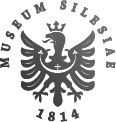The Hlučín-Darkovičky Czechoslovak Fortification Complex is a unique artefact of its type, and of immense value in a European context. The Fortification Complex is an exhibition of military technology that gives visitors the opportunity to find out about a major aspect of the history of the first half of the 20th century.
The Czechoslovak Fortification Complex in Hlučín-Darkovičky has been part of the Silesian Museum since 1992. It forms one of the museum’s six exhibition premises, with a close thematic link to the national Second World War Memorial in nearby Hrabyně.
In the context of the Silesian Museum, the Fortification Complex is specific in that, while it is located in the countryside, its thematic focus is relatively unconventional within its category. It includes a group of structures that were created as part of the Czechoslovak border defence system, and which are amongst the most interesting in the Czech Republic and the best-preserved in Europe. The Complex consists of five structures, both one-sided and two-sided, of various types and durability grades. Experts are therefore able to present the battlefield and individual structures, both in the condition and with the fittings as they were in 1938, as well as the condition they were in at the end of the war.
The complex is also symbolic of key events in Czechoslovak history, being, as it is, closely linked to the Munich Agreement and loss of the Sudetenland, and therefore one of the most dramatic moments in the history of Silesia.
The second half of the 1930s was a time of rising international tension and increasing instability, caused by the militaristic policies of Hitler’s Germany after 1933. In order to protect its democratic system, territorial integrity and national sovereignty Czechoslovakia, which was particularly threatened, began the construction of a massive system of permanent border fortifications. The reinforced-concrete fortresses with their military crews, together with other units of the Czechoslovakian army, were intended to ensure the effective protection of the state, which was threatened by the military aggression of Nazi Germany. The greatest threat along the then Czechoslovak-German borders, and the strategic priority, was along the northern zone stretching from Bohumín to Děčín. It was in this region, in the area between the towns of Bohumín and Háj ve Slezsku, that the construction of heavy fortifications was begun in 1935.
The next three years, culminating in September 1938, saw the construction, fitting and, chiefly, arming of forty heavy-duty forts, including one artillery fort and several embedded type-37 A casemates with enhanced fortifications (known colloquially as ‘řopíky’ after ŘOP, the Czechoslovakian Directorate of Fortifications). An integrated system of obstacles and a cable telephone network were also built, as well as barracks for Border Regiment 4 in Hlučín.
The distinguishing factor of the ‘MO’ (Moravská Ostrava) sector was that during its construction the authorities sought to refine the design for future stages of the fortification system as a whole. While its form was, initially, heavily influenced by the French ‘Maginot Line’, this was increasingly simplified and improved over time so that the maximum level of defence could be achieved at reasonable cost.
Following the Munich Agreement of 30th September 1938, Czechoslovakia was compelled to cede its border territories – the Sudetenland – to Germany. This resulted in the annexation of areas in which over 50% of the population was German to the Third Reich. Nazi Germany argued that the Sudeten German regions should be reunited with the Reich; however, these areas had belonged to the Czech crown since the 10th century. This agreement, made between Germany, Great Britain, France and Italy, led to the loss by Czechoslovakia of a total 41,098 km2 of territory and 4,879,000 inhabitants.
At the same time, however, it lost its border fortification system. All facilities had to be surrendered without a fight. Although the network was not complete (a total of 15,463 heavy and 1,276 light structures were planned, with the final stage of construction scheduled for 1946), it was, nevertheless, relatively extensive, and consisted of nearly 10 thousand light structures, intended as a temporary defensive shield for infantry, and 263 heavy structures, intended to be permanently manned and equipped for long-term resistance.
The border region was subsequently occupied by German forces. All armoured components were removed and later utilised by the German army and industry. In the years 1944–1945 the German army started to repair and improvise the arming of the fortifications in an effort to build the so-called Moravian Defensive Gate and Jeseníky Barrier Zone in response to the approach of the Red Army. The sophistication of the pre-war Czechoslovak fortifications system was demonstrated by the heavy fighting that took place for control of the system during the subsequent battle for the Ostrava region, which was the most intense military operation on the territory of Czechoslovakia and one that cost many lives.
Article last updated: 30.07.2012
Print whole article



